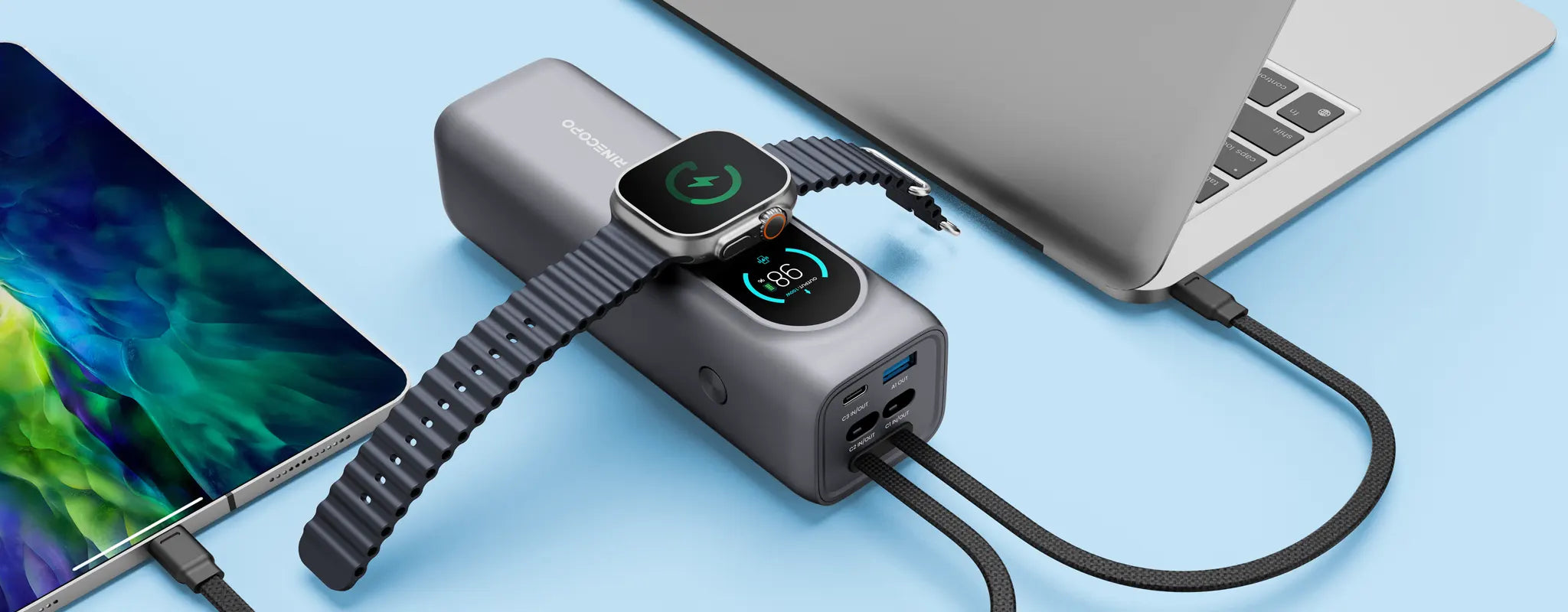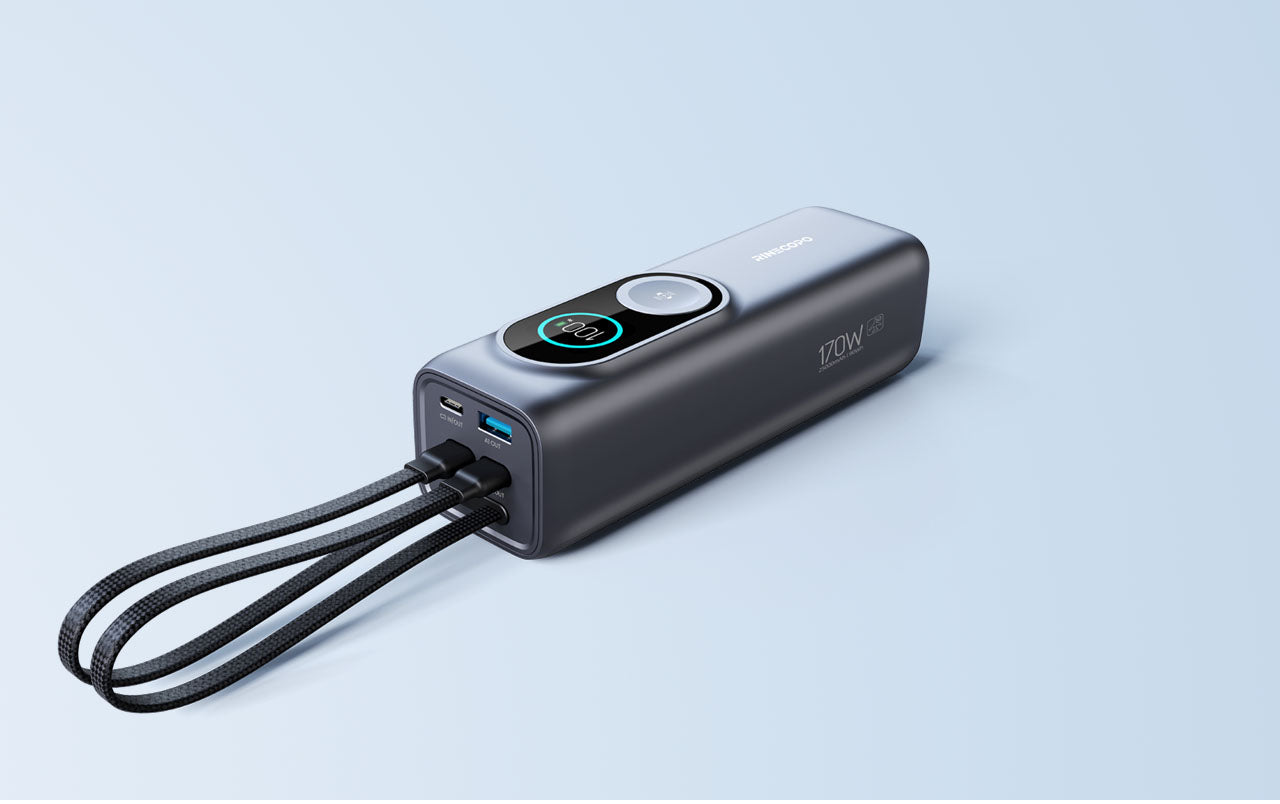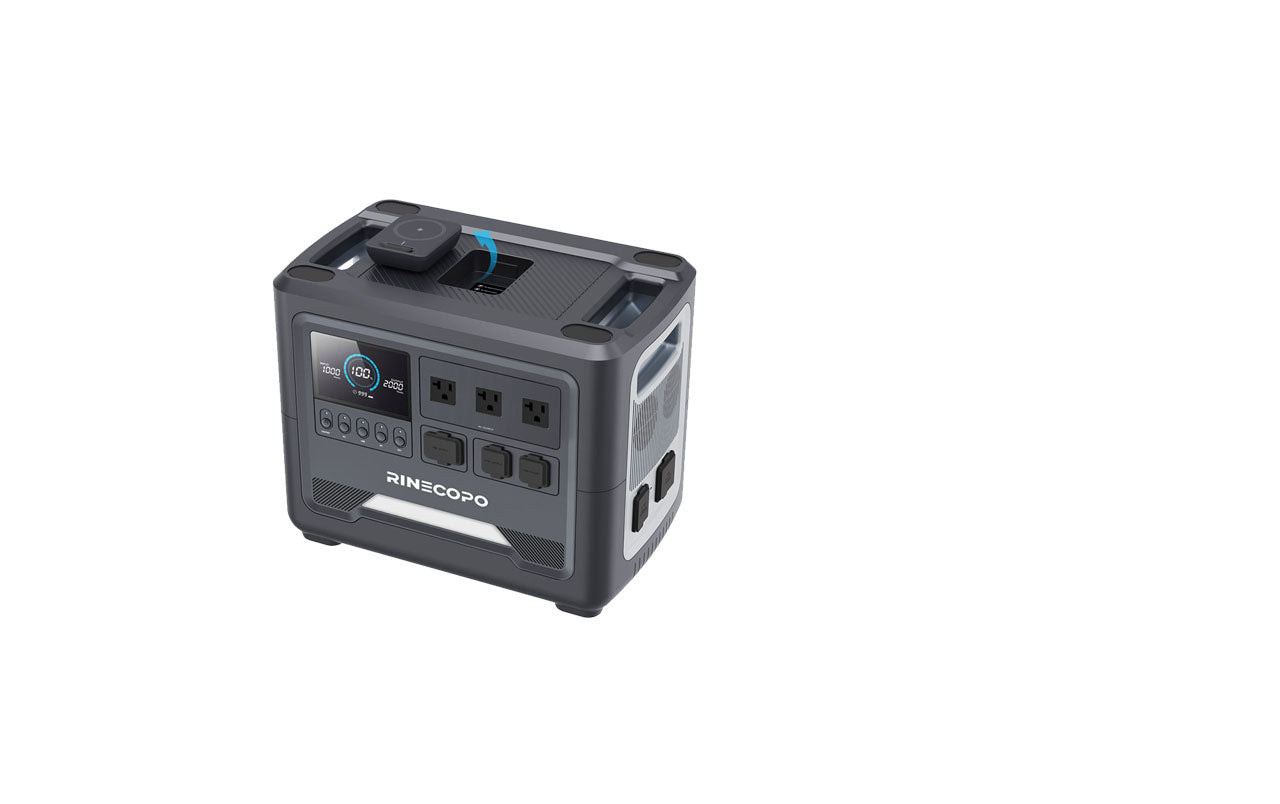
Waiting at an airport gate, navigating a foreign city, or preparing for a global business meeting—what’s the one thing we all dread? A dying phone battery. That’s when the small device in your pocket—your power bank—turns from backup accessory to absolute lifesaver. But what exactly is it, and why has it become so essential in modern life?
Core Definition: More Than Just a “Battery Box”
At its core, a power bank is a portable electronic device that integrates a rechargeable energy cell (typically lithium-ion or lithium-polymer), charging circuitry, and input/output ports.
Its primary role is simple: to store electricity and provide power to your devices when you’re away from a wall outlet.
Think of it like a “water canteen for energy.” You fill it up at home (charge it from an outlet), and later on the road, you pour out what you need (use it to recharge your phone, tablet, or laptop).
The Global Anatomy of a Power Bank
1. Capacity: The Size of the Fuel Tank
-
Measured in mAh (milliamp-hours) or Wh (watt-hours).
-
International perspective: In the U.S. and Europe, watt-hours are more common, especially for air travel. TSA and most airlines allow:
-
Under 100Wh: carry-on approved, no paperwork.
-
100–160Wh: may require airline approval.
-
Over 160Wh: generally prohibited.
-
-
Example: An iPhone 15 battery is about 12–15Wh, so a 100Wh power bank can charge it roughly 6–7 times.
2. Output: How Energy Flows Out
-
Common ports: USB-A and USB-C.
-
Output varies (5V/2.4A, 9V/2A, etc.), which directly affects charging speed.
-
Global trend: USB-C with Power Delivery (PD) is quickly becoming the worldwide standard, capable of fast-charging not only smartphones but also tablets and even laptops.
3. Input: How the Tank Gets Refilled
-
This refers to how the power bank itself is recharged.
-
International perspective: The best models support 100–240V input range, so with a simple plug adapter (not a heavy voltage converter), you can recharge your power bank anywhere in the world—China, the U.S., Europe, or beyond.
Why Power Banks Matter More Than Ever
-
Digital Survival
Our phones are our wallets, maps, translators, cameras, and workstations. A dead battery isn’t just inconvenient—it can cut us off from the digital world. -
Global Mobility
From business trips to international travel and studying abroad, a reliable power bank offers peace of mind. It ensures you can always navigate, translate, or communicate in unfamiliar environments. -
Sustainability
Unlike single-use emergency chargers, a good power bank can be recharged hundreds of times, reducing waste and making it a greener choice.
Smart Tips for International Travelers
-
One Cable to Rule Them All
Get a USB-C PD power bank and a high-quality USB-C to C cable. This combo works with most modern devices worldwide. -
Check Watt-Hours, Not Just mAh
Always verify your power bank’s Wh rating before long flights to avoid trouble at airport security. -
Balance Power and Portability
-
For city exploring: a slim 10,000mAh power bank is perfect.
-
For outdoor adventures: 20,000mAh or more, preferably rugged and durable.
-
The Bottom Line
A power bank is no longer just a gadget—it’s the external heartbeat of our digital lives.
It frees us from being tied to outlets, empowering us to stay connected in airports, cafés, trains, and even remote landscapes. Choosing the right power bank isn’t just about buying tech—it’s about investing in the freedom to live, work, and explore without limits.
Recent Posts
Blog Tags
Power Banks: Your Pocket-Sized Energy Hub That Keeps the World Connected
At its core, a power bank is a portable electronic device that integrates a rechargeable energy cell (typically lithium-ion or lithium-polymer), charging circuitry, and input/output ports.
Its primary role is simple: to store electricity and provide power to your devices when you’re away from a wall outlet.
Best Power Bank Buying Guide: How to Choose the Right Portable Charger for Every Need
The capacity and portability of a power bank are always in direct conflict. More power inevitably means more weight and bulk. When choosing the right one, it all comes down to your actual usage scenarios:
Best Power Bank for iPhone 17: RINECOPO 25,000mAh 170W Portable Charger
That’s where the RINECOPO 25,000mAh 170W power bank steps in — the ultimate power bank for iPhone 17 and other high-performance devices.





